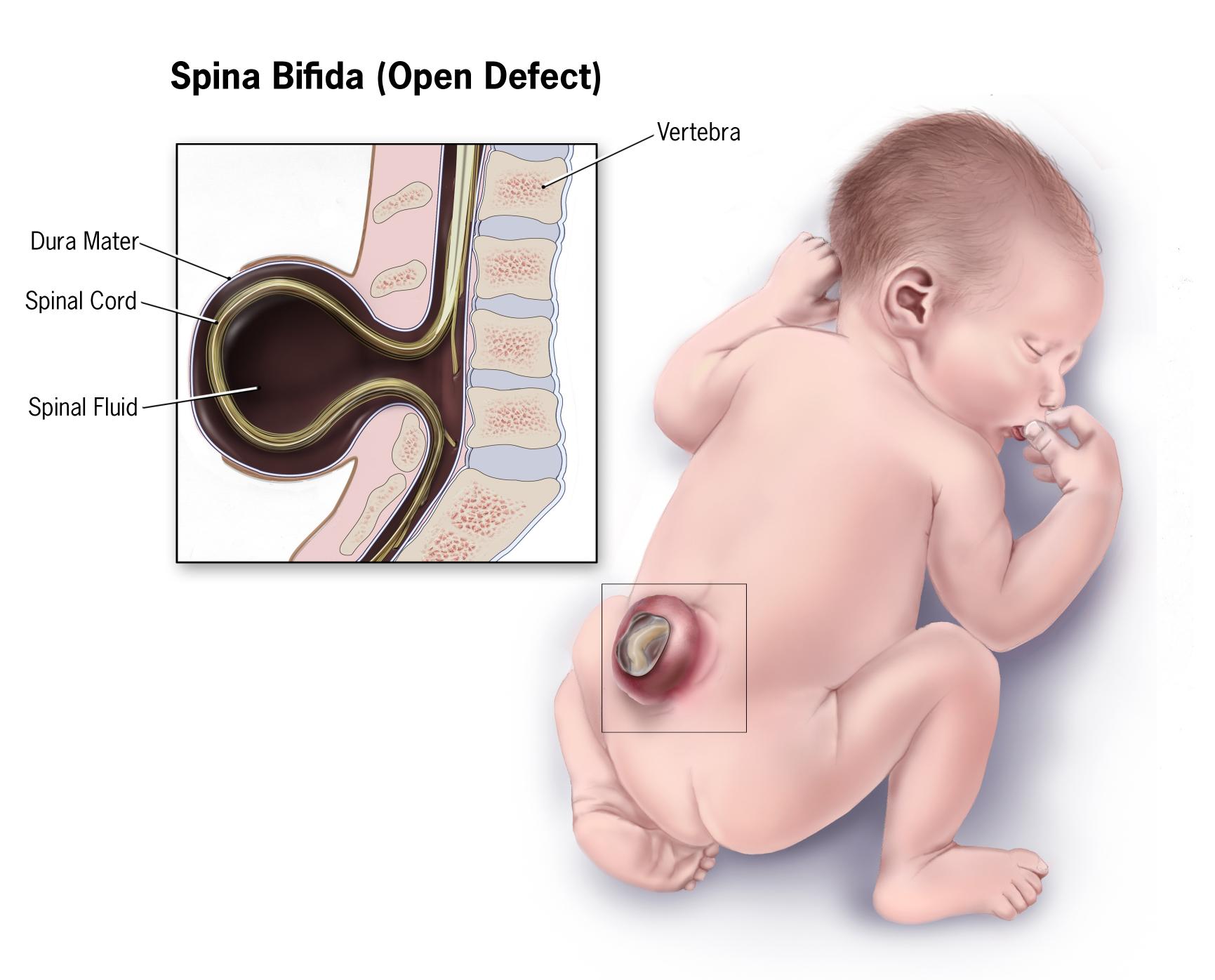Spina Bifida: Symptoms, Causes, Treatment
What are the symptoms of spina bifida?
Spina bifida is a birth defect that occurs when the spine and spinal cord do not form properly during pregnancy. The severity of spina bifida can vary, and not all cases cause symptoms. However, when symptoms do occur, they may include:
- Visible spinal defect: In some cases of spina bifida, there may be a visible sac or lump on the back, which may or may not be covered by skin.
- Meningocele: In this form of spina bifida, a sac containing the membranes around the spinal cord (meninges) protrudes through an opening in the spine, but the spinal cord remains intact. This may cause few or no symptoms.
- Myelomeningocele: This is the most severe form of spina bifida, in which the spinal cord and nerves protrude through an opening in the spine, forming a sac. This can lead to nerve damage and a range of symptoms, including:
- Weakness or paralysis in the legs
- Problems with bladder or bowel function, such as incontinence or constipation
- Sensory problems, such as numbness or loss of sensation in the legs
- Orthopedic issues, such as clubfoot or hip dislocation
- Hydrocephalus (a buildup of fluid in the brain), which can cause symptoms such as headaches, vomiting, and changes in vision
- Latex allergy: People with spina bifida are at higher risk of developing a latex allergy, which can cause symptoms such as skin rash, hives, itching, and in severe cases, difficulty breathing.
It’s important to note that symptoms of spina bifida can vary widely depending on the type and severity of the condition. Treatment for spina bifida typically involves surgery to close the opening in the spine and, in some cases, to address other complications. Physical therapy, occupational therapy, and other supportive treatments may also be recommended to help manage symptoms and improve quality of life.
What are the causes of spina bifida?
Spina bifida is a congenital condition, meaning it is present at birth, and occurs when the neural tube, which eventually develops into the brain and spinal cord, fails to close properly during early embryonic development. The exact cause of spina bifida is not known, but it is thought to involve a combination of genetic and environmental factors. Some factors that may increase the risk of spina bifida include:
- Genetics: Spina bifida can run in families, suggesting a genetic component to the condition. However, most cases of spina bifida occur in families with no history of the condition.
- Folic acid deficiency: Adequate intake of folic acid, a B vitamin, before and during early pregnancy can reduce the risk of spina bifida. Women who do not get enough folic acid in their diet or through supplements are at higher risk of having a baby with spina bifida.
- Medications: Some medications, such as certain anti-seizure medications, have been associated with an increased risk of spina bifida when taken during pregnancy.
- Diabetes: Women with diabetes are at higher risk of having a baby with spina bifida.
- Obesity: Women who are obese before pregnancy may be at higher risk of having a baby with spina bifida.
- Hyperthermia: Some studies suggest that exposure to high temperatures, such as in hot tubs or saunas, during early pregnancy may increase the risk of spina bifida.
- Other factors: Other factors that may increase the risk of spina bifida include maternal age, certain infections during pregnancy, and exposure to certain environmental toxins.
It’s important to note that most cases of spina bifida occur sporadically, meaning they occur without any known cause or family history. Taking steps to maintain a healthy lifestyle, including getting enough folic acid before and during pregnancy, can help reduce the risk of spina bifida and other neural tube defects.
What is the treatment for spina bifida?
The treatment for spina bifida depends on the type and severity of the condition. In general, treatment aims to manage symptoms, prevent complications, and improve quality of life. Treatment options for spina bifida may include:
- Surgery: Surgery is often needed to close the opening in the spine and, in some cases, to treat complications such as hydrocephalus (a buildup of fluid in the brain). Surgery to close the opening is typically performed shortly after birth.
- Hydrocephalus management: If hydrocephalus occurs, a shunt may be placed to drain excess fluid from the brain and relieve pressure. This shunt is a small tube that is placed in the brain and drains into the abdomen or another part of the body.
- Physical therapy: Physical therapy can help improve muscle strength, coordination, and mobility. It can also help prevent or manage orthopedic issues such as clubfoot or hip dislocation.
- Occupational therapy: Occupational therapy can help children learn skills for daily living, such as dressing, feeding, and using the bathroom.
- Mobility aids: Depending on the severity of the spina bifida, mobility aids such as braces, crutches, or wheelchairs may be needed to help with walking.
- Medications: Medications may be prescribed to manage symptoms such as bladder or bowel dysfunction, muscle spasms, or pain.
- Counseling and support: Counseling and support groups can provide emotional support and guidance for families affected by spina bifida.
- Regular medical check-ups: Regular medical check-ups are important to monitor for any complications and ensure that the child is receiving appropriate care and support.
The specific treatment plan for spina bifida will depend on the individual case and may involve a team of healthcare providers, including pediatricians, neurosurgeons, orthopedic surgeons, physical therapists, and other specialists. Early intervention and ongoing care can help improve outcomes and quality of life for individuals with spina bifida.




